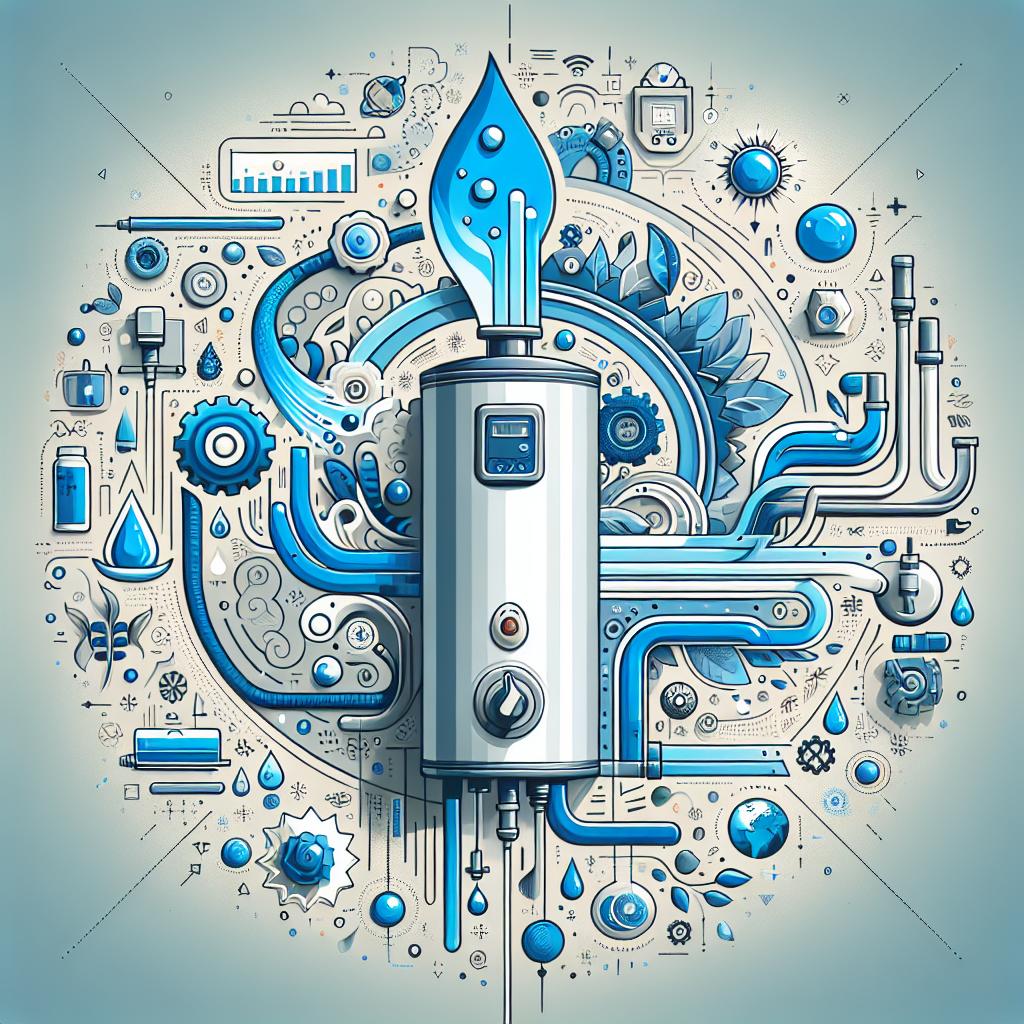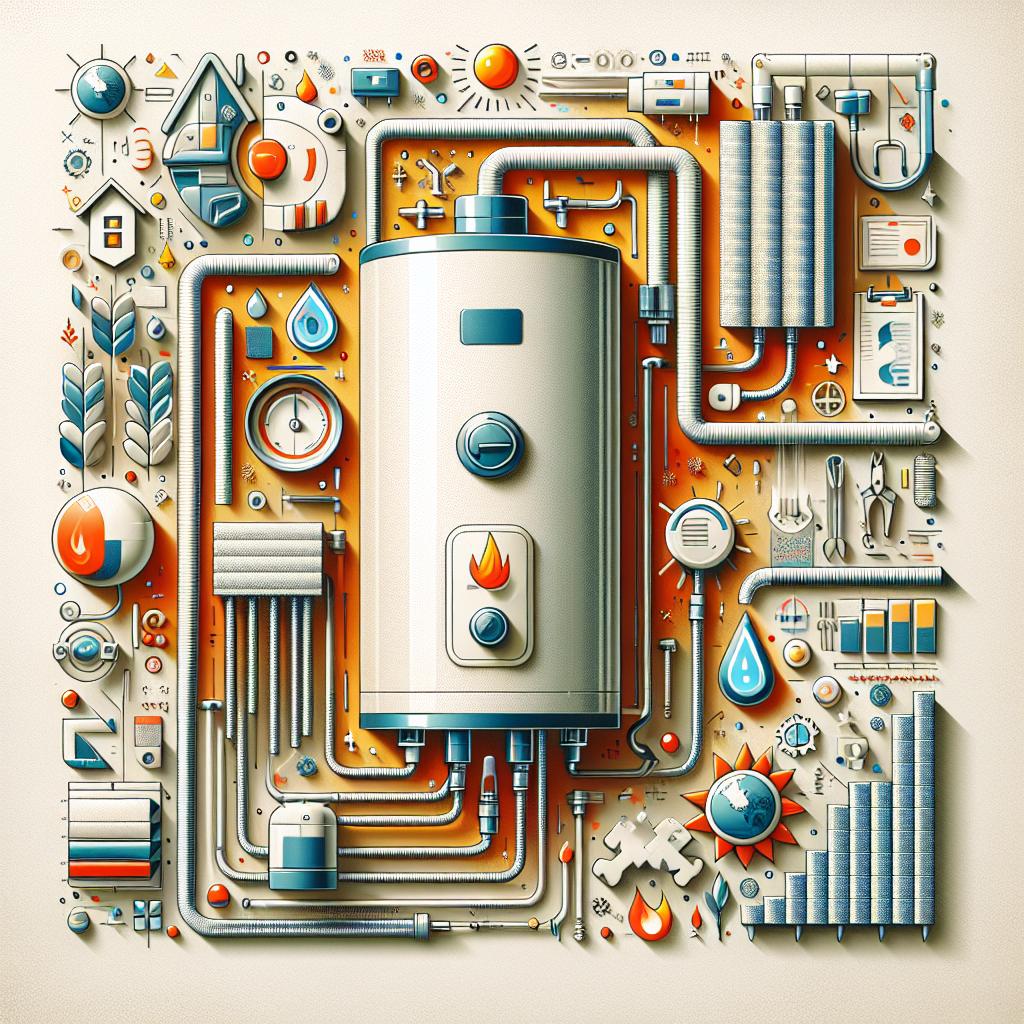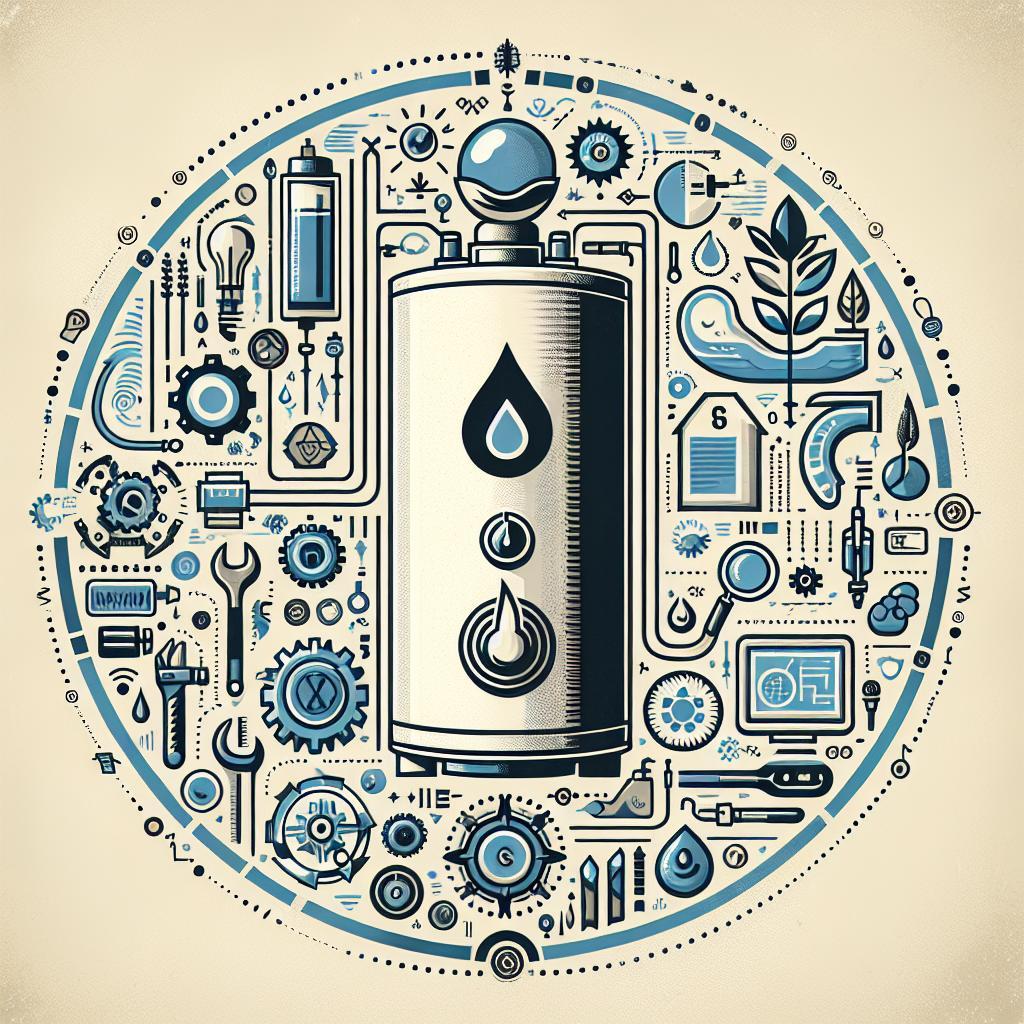Title: Keeping the Heat Up: A Friendly Guide to Water Heater Maintenance for Energy Efficiency
When it comes to the unsung heroes of our home, water heaters often don’t get the appreciation they deserve. They tirelessly wake up early to warm our showers, keep our dishes sparkling clean, and provide cozy warmth to a chilly evening soak. Yet, like any hardworking hero, they need a little TLC to keep performing their best—especially when it comes to saving energy and keeping your utility bills in check. In this article, we’re diving into the wonderful world of water heater maintenance. With a sprinkle of tips and a dash of friendly advice, you’ll learn how to keep your trusty water heater running efficiently and effectively. So, grab your toolbox and let’s ensure that your water heater remains the champion of comfort in your home!
Understanding Your Water Heaters Components for Better Performance
To achieve optimal performance from your water heater, it’s essential to familiarize yourself with its main components. Each piece plays a critical role in the system’s efficiency and longevity. Understanding these parts allows you to implement effective maintenance strategies. Here are the key components you should know:
- Heating Element: The heart of the water heater, responsible for warming the water.
- Thermostat: Regulates the temperature of the water, ensuring it’s just right for your needs.
- Tank: Stores hot water until needed; size impacts energy efficiency.
- Pressure Relief Valve: Prevents excess pressure buildup, avoiding potential hazards.
Regular inspection and maintenance of these components can significantly enhance the energy efficiency of your heater. By keeping an eye on the heating element for signs of wear, checking the thermostat accuracy, and ensuring that the pressure relief valve is functioning properly, you can prevent unnecessary energy expenditure. To help visualize the maintenance schedule, consider using the following table:
| Component | Maintenance Frequency | Action |
|---|---|---|
| Heating Element | Every 6 months | Inspect for corrosion |
| Thermostat | Annually | Check temperature settings |
| Pressure Relief Valve | Every 3 months | Test for proper operation |

Simple Tips for Flushing Your Water Heater to Keep it Running Smoothly
To ensure your water heater runs efficiently, it’s essential to flush it periodically. Here are some simple tips to guide you through the process:
- Turn off the power supply: If you have an electric water heater, make sure to switch off the electrical circuit. For gas heaters, set the thermostat to the “pilot” position.
- Connect a garden hose: Attach the hose to the drain valve located at the bottom of the tank. Ensure the other end of the hose is placed in a suitable drainage area.
- Open the drain valve: Carefully open the valve to allow sediment and water to flow out. It’s a good practice to run the heater until the water runs clear.
- Flush with cold water: After draining, close the drain valve and turn on the cold water supply briefly to rinse the tank. Repeat this process until no sediment is visible.
- Restore power: Once the tank is emptied and rinsed, turn the power supply back on and set the thermostat to your desired temperature.
Regular maintenance, such as flushing your water heater, can help prevent issues like sediment buildup that reduces efficiency. Here’s a quick guide on how often to flush:
| Water Heater Type | Flushing Frequency |
|---|---|
| Conventional Storage Heater | Every 6-12 months |
| Tankless Water Heater | Every 1-2 years |
| Solar Water Heater | Every year |
Following these easy steps can help extend the lifespan of your water heater while promoting energy efficiency in your home.

Insulation Matters: How to Protect Your Water Heater from Heat Loss
Heat loss can be a sneaky enemy when it comes to your water heater’s efficiency, but there are several effective ways to fortify your system against it. Start by wrapping your water heater with a high-quality insulation blanket, which acts as a protective shield. This simple step can cut heat loss by up to 45%, allowing your heater to work less while still delivering hot water when you need it. Additionally, make sure to insulate any exposed hot water pipes using foam pipe insulation to maintain optimal temperatures as water travels through the system.
Don’t overlook the importance of checking your thermostat settings either. Aim for a balanced temperature; around 120°F is typically sufficient for a household while preventing scalding accidents. If your water heater is over a decade old, consider upgrading to a more energy-efficient model that features built-in insulation. Keeping your water heater tucked away from drafts, such as windows or open areas, will also aid in efficiency. Below is a quick table outlining the primary insulation options:
| Insulation Type | Benefits |
|---|---|
| Insulation Blankets | Reduces heat loss up to 45% |
| Foam Pipe Insulation | Prevents heat loss in pipes |
| Heat Traps | Minimizes heat loss through connections |

Scheduling Regular Maintenance: The Key to Longevity and Efficiency
Regular maintenance of your water heater is an essential routine that can enhance its lifespan and improve energy efficiency. By setting up a maintenance schedule, you allow for timely checks and repairs, preventing smaller issues from escalating into costly problems. Here are some key activities to include in your maintenance regimen:
- Flushing the Tank: This helps remove sediment buildup, which can impair efficiency and lead to premature wear.
- Inspecting Connections: Regularly check for any leaks or corrosion at connections to ensure optimal performance.
- Testing the Pressure Relief Valve: This vital safety feature should be tested yearly to avoid dangerous build-up of pressure.
Furthermore, consider keeping a log of maintenance activities. This not only helps in monitoring the health of your water heater but also serves as a useful reference for any service professionals in the future. Use the following simple table to outline your regular maintenance tasks:
| Maintenance Task | Frequency |
|---|---|
| Flush the tank | Once a year |
| Inspect connections | Every 6 months |
| Test pressure relief valve | Yearly |
Q&A
Q&A: How to Maintain Your Water Heater for Energy Efficiency
Q1: Why is it important to maintain my water heater?
A: Great question! Regular maintenance not only extends the lifespan of your water heater but also boosts its energy efficiency. Think of it as pampering your appliance – the more love and attention you give, the better it performs. A well-maintained heater could help you save money on your energy bills, too!
Q2: How often should I perform maintenance on my water heater?
A: Ideally, you should give your water heater a little TLC at least once a year. This routine check-up should include flushing the tank, checking the anode rod, and inspecting for leaks. If you’re in a hard water area, you might want to bump that frequency up to twice a year.
Q3: What’s the first step in checking my water heater?
A: Let’s start with your trusty friend, the thermostat! Set it to 120°F (49°C) to strike the perfect balance between comfort and safety. This temperature not only saves energy but also reduces the risk of scalding. Once that’s settled, give your heater a good look-over!
Q4: What does “flushing the tank” mean, and how do I do it?
A: Flushing the tank is like giving your water heater a refreshing cleanse! It removes sediment build-up, which can make your heater work harder, leading to energy waste. To do it, turn off the power/gas, connect a hose to the drain valve, and release the water into a bucket or outside. Open the cold water inlet to help stir things up, and voilà – a sparkling clean tank!
Q5: What’s an anode rod, and why should I check it?
A: Ah, the anode rod – the unsung hero of your water heater! This magical metal rod attracts corrosive elements in the water, protecting the tank from rust. Check it annually; if it’s more than 50% corroded, it’s time for a replacement. By doing this, you’re prolonging the life of your heater and keeping it running efficiently.
Q6: Are there any signs my water heater needs attention?
A: Absolutely! Keep an eye out for unusual noises, which might indicate sediment buildup. Leaks or puddles around your unit? That’s a cry for help! And if your water isn’t heating up properly or fluctuates in temperature, it’s definitely time for a check-up.
Q7: Can I perform maintenance myself, or should I hire a professional?
A: You can definitely handle some basic maintenance yourself! Flushing the tank, checking the thermostat, and replacing the anode rod are all within reach. However, if you ever feel unsure or if there’s a serious issue, don’t hesitate to call in a pro – they’ll have your back and help ensure everything’s running smoothly!
Q8: Any quick tips for improving overall water heater efficiency?
A: Sure thing! Besides regular maintenance, consider insulating your water heater and the first few feet of hot water pipes for additional energy savings. Also, using hot water during off-peak hours (like early morning or late evening) can help reduce costs. Lastly, keep the area around your water heater clear for optimal airflow!
Q9: What’s the most rewarding part of maintaining my water heater?
A: Besides the warm, fuzzy feeling of being a responsible homeowner? It’s definitely the savings! A well-maintained water heater is not only efficient but can also save you quite a bit of cash on monthly bills – and who doesn’t love that?
Q10: Where can I find helpful resources or guides for water heater maintenance?
A: Your water heater’s manual is a fantastic place to start! Many manufacturers also provide detailed online guides and videos. Plus, local home improvement stores often offer workshops, and don’t forget the wealth of DIY articles and videos available online. But remember, when in doubt, consult an expert!
There you have it – your go-to guide for keeping your water heater in top shape while being best buddies with your energy bill! Happy heating! 🚿✨
To Conclude
As we wrap up our exploration of water heater maintenance, remember that keeping your unit in top shape is not just about saving a few extra bucks on your utility bill. It’s an investment in both your home and the environment! With a bit of TLC and consistent care, you can ensure your water heater runs efficiently for years to come. So roll up those sleeves, grab those tools, and give your trusty water heater the attention it deserves. By taking these easy steps, you’ll enjoy reliable hot water while also being a champion of energy efficiency. Here’s to cozy showers, reduced energy bills, and a greener planet—one gallon at a time! Cheers to efficient living!

